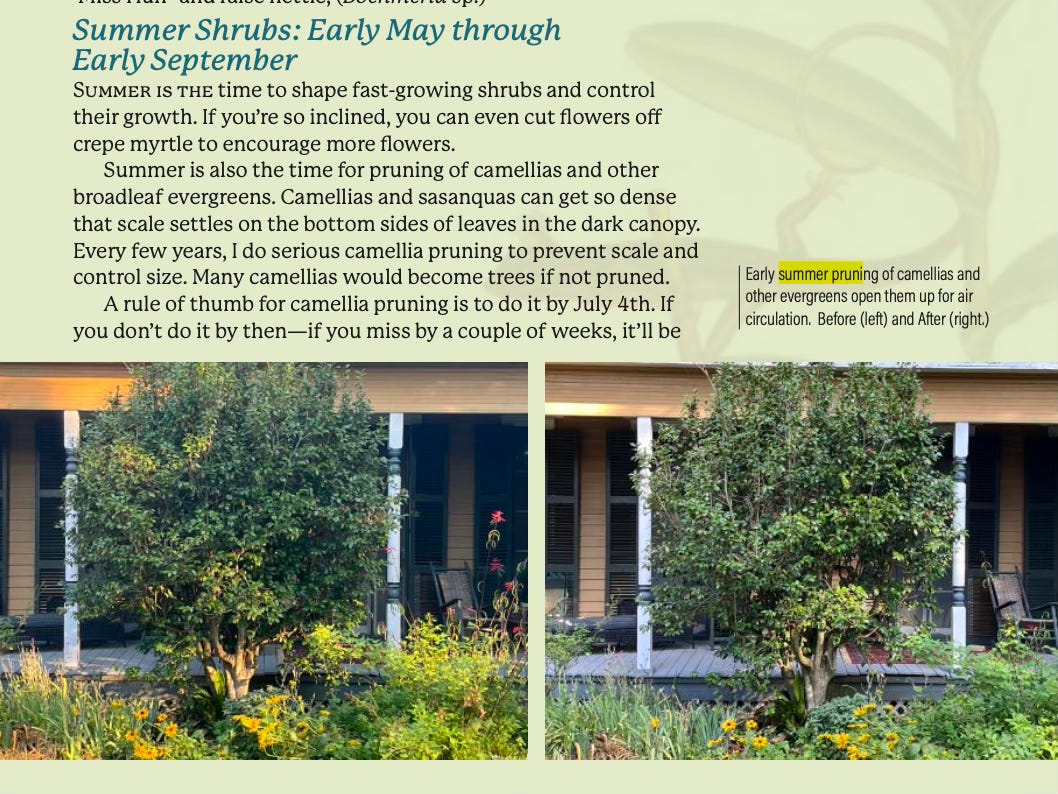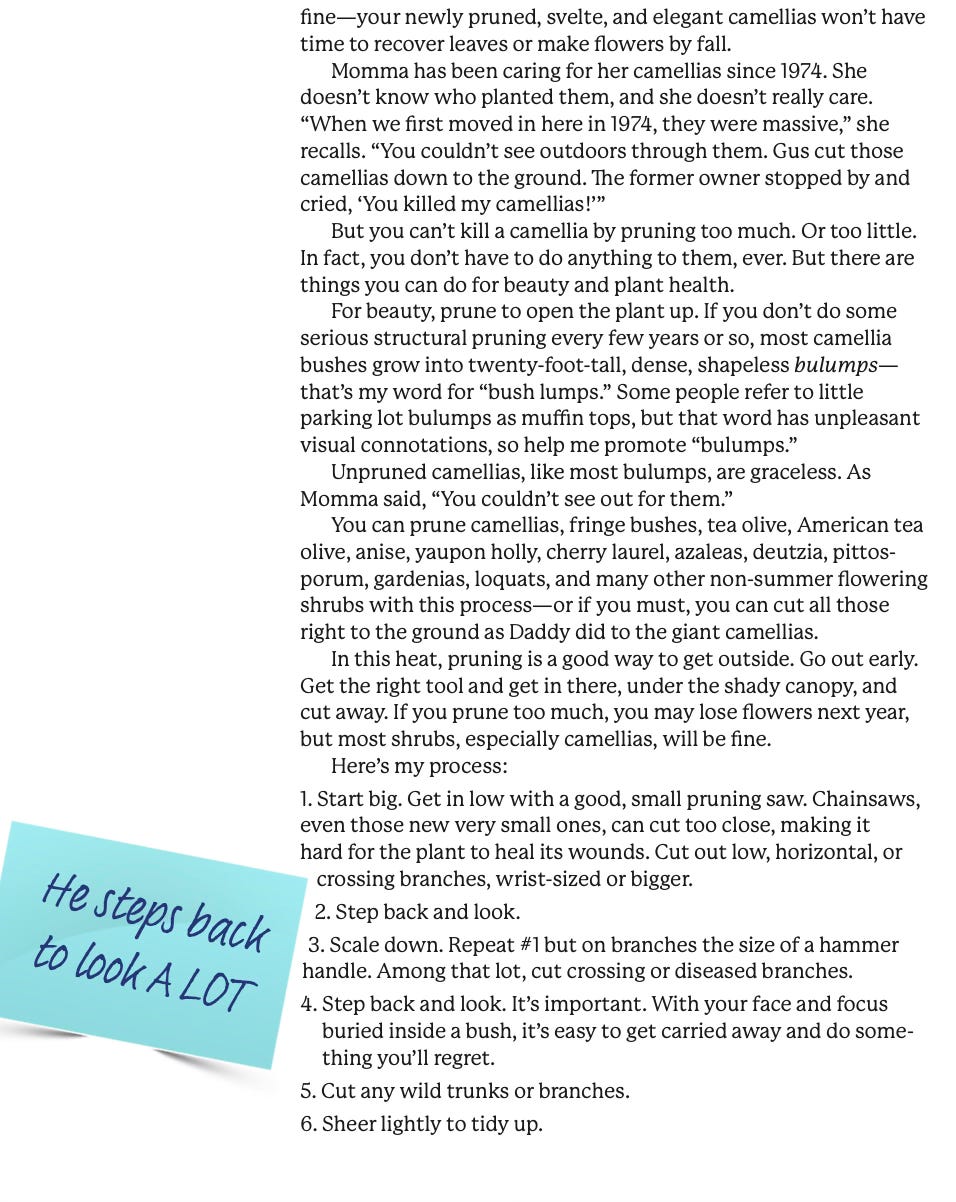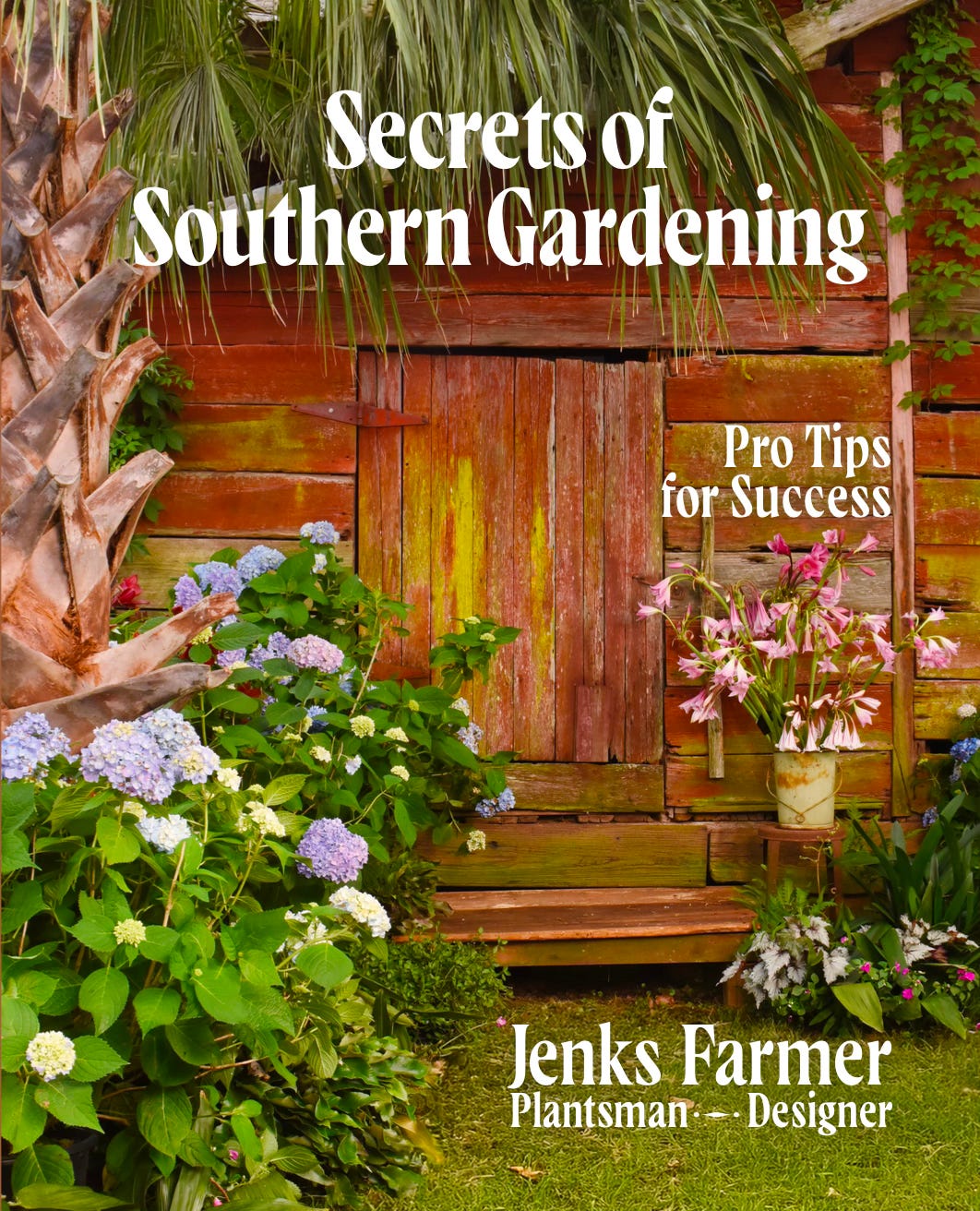It's counterintuitive, and lots of you will laugh or roll your eyes. Some of you just don't want to go outside at all this time of year. Here's the provocation: pruning big shrubs and small trees makes for sort of slow, easy, cool work for hot, humid July days.
Why Summer Pruning Works in Southern Gardens
From a personal and working standpoint, get out there early. Follow the shade. Work in brief spurts. Stand back, evaluate, and rest frequently. Sometimes, I even stick my head into a bush to trick myself into thinking I'm in the shade. It works.
From a plant response standpoint, technically, the best time to prune many plants is in the winter, when they can use energy to heal the wounds quickly. Summer pruning means energy is going to all sorts of things: growing leaves, flowers, fruits, as well as wound healing. But in our hot, wet climate, there's plenty of energy, and so many plants tolerate pruning, even severe pruning in summer, just fine.
Get to pruning now so your plants will have time to recover before winter cold. In the video below, you'll see a pruning project that simply had to be done now, as the client has a new property that's been ignored for years, so a clean-up pruning is strongly desired. We're also pruning camellias and other evergreens. Whether you bought into my pitch of pruning being easy summer work or not, you probably have some overgrown, over-thick bushes that need to see a blade right now.
Best Tools and Techniques for Hot Weather Pruning
The tools of pruning make for rather easy work. I use a mini-electric chainsaw these days. A friend let me try out his mini- hand-held-chain drive pruner tool the other day. It was amazing and made this job even easier. A simple pruning saw and clippers are essential. One caveat, before you start, review proper pruning cuts! These small chainsaws are so easy to use that they encourage long, smooth cuts that remove the branch collar — the collar should be preserved as it helps cuts heal. (google it there’re great videos on this.)
What to Prune Now: From Camellias to Vitex
Summer pruning is a whole chapter of a horticulture 101 textbook. You can find lists of plants that tolerate summer pruning. I'm doing lots of evergreen hedges, including:
Hollies
Japanese boxwood
Cherry laurel
Other laurels
Loquat
Guava
Pittosporum
Aucuba
Camellias
Yes camellias. I know, I know the internet is going to say don't do it! You'll prune off all the flowers! Yes, you'll lose some flowers this winter. But sometimes, you just have to do what you have to do when you have to do it. (I'm talking about winter-flowering camellias - I try to avoid pruning fall-flowering Camellia sasanqua now.
The sort of pruning I'm talking about is serious, deep, structural pruning of trunks and branches. Sometimes it's called depth pruning, though in the video, my young intern calls it "Death pruning."
The opposite sort of pruning is shearing. Of course, you can shear hedges now, even things like vitex and crepe myrtle after flowers - for those two, you'll stimulate a second round of flowers.
Camellias (and other evergreens) especially need opening up as they grow densely inhibiting air circulation. That intern makes a great home for a little pest called scale. Scale sucks nutrients from the leaves.
As I said, there are whole books on pruning. Learning to make a great cut is essential. That sort of information is easy to find. I wanted this book to cover the basics, but not repeat things are are already easy to find. Here's a short excerpt from the pruning chapter in my new book, Secrets of Southern Gardening.
And here is a video of us pruning this week. NOTE: If you have a touch screen, you can pinch to make the video bigger, or you can make it bigger by hitting the diagonal arrows in the top left corner. (Sorry, Substack is wonky with videos.)
Get the Complete Guide: Pre-Order Secrets of Southern Gardening
Pre-order the new book! It will not be on Amazon! As an independent author, I have to be a bit of a rebel to make sure that my book, this work of a team, this work of passion, makes money. Amazon charges indie authors $5.80 per book, and I have to pack, address, and mail the books, too! So, we're just selling it ourselves.
Please share the button below if you know folks on Facebook or Substack who need this book! Click the Secrets of Southern Gardening cover below to order. Bookstores and shops can place wholesale orders by contacting us here.








Great, informative article. Who knew?
Not in the list are sage. Are those good candidates for a summer trim?